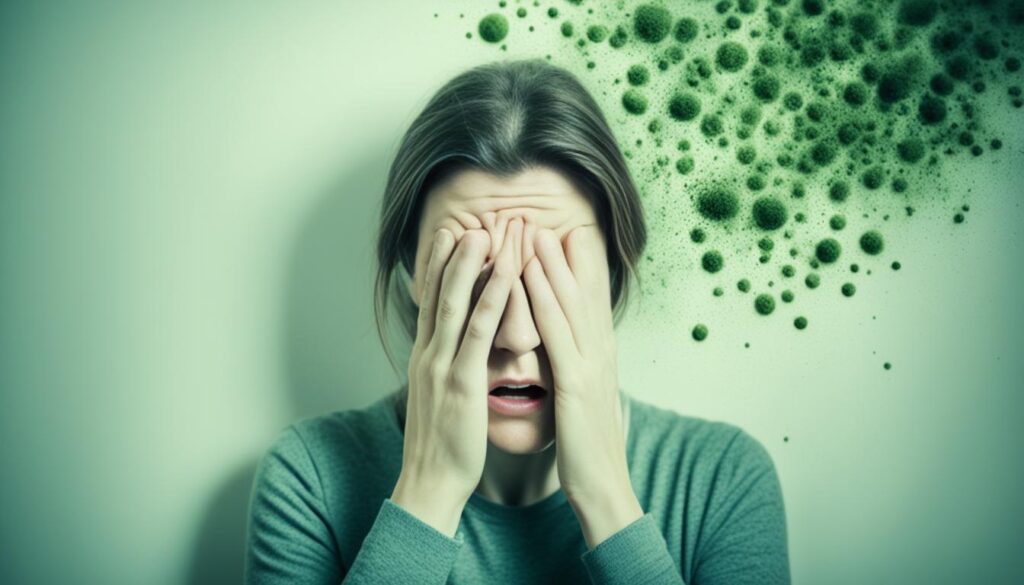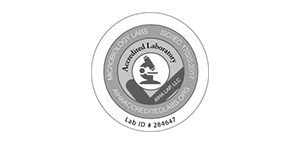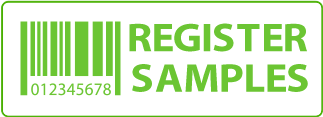
10 Warning Signs of Mold Toxicity Explained
Did you know that mold toxicity affects millions of people worldwide, with symptoms often going undetected or misdiagnosed?
Mold exposure can have serious health effects, and it’s crucial to be aware of the warning signs to protect yourself and your loved ones. In this article, we will dive into the ten key indicators of mold toxicity, providing you with an in-depth explanation of each symptom.
By understanding these warning signs, you’ll be empowered to take proactive measures and seek the necessary assistance to mitigate the harmful effects of mold exposure. Let’s get started!
Key Takeaways:
- Millions of people worldwide are affected by mold toxicity, often without realizing it.
- Mold exposure can lead to serious health issues and should not be taken lightly.
- Being aware of the warning signs helps in early detection and taking appropriate action.
- Understanding the symptoms allows you to protect yourself and your loved ones from the harmful effects of mold toxicity.
- Seeking professional help is crucial when dealing with mold-related health concerns.
Understanding Mold Toxicity and Its Health Impacts
To fully comprehend the warning signs of mold toxicity, it is essential to first understand what mold toxicity is and how it can affect our health. Mold toxicity, also known as mold illness, refers to the adverse health effects caused by exposure to mold and its biotoxins.
When mold grows in damp or humid environments, it releases tiny spores that become airborne. These spores can be inhaled or come into contact with the skin, leading to various health issues.
The health effects of mold exposure can vary depending on the individual’s sensitivity and the type and concentration of mold present. Common health effects include:
- Allergic reactions: Mold can trigger allergic reactions in susceptible individuals, leading to symptoms such as sneezing, coughing, itchy eyes, and skin rashes.
- Respiratory problems: Prolonged exposure to mold spores can irritate the respiratory system and worsen pre-existing conditions such as asthma and chronic obstructive pulmonary disease (COPD).
- Neurological symptoms: Some individuals may experience neurological symptoms like headaches, dizziness, difficulty concentrating, and memory problems.
- Immune system suppression: Mold biotoxins can weaken the immune system, making individuals more susceptible to infections and other illnesses.
- Skin irritation: Direct contact with mold or its spores can cause skin irritation, redness, and itching.
- Digestive issues: Mold exposure has been associated with gastrointestinal problems like nausea, diarrhea, and bloating.
It’s important to note that the severity of symptoms can vary from person to person. Some individuals may experience mild symptoms, while others may develop more severe health issues.
Understanding the basics of mold toxicity and its health impacts is crucial in recognizing the warning signs that will be discussed in the next section. Being aware of these symptoms can help individuals take appropriate actions to protect their health and seek professional assistance if needed.
What are the 10 warning signs of mold toxicity?
In this section, we will explore the 10 warning signs of mold toxicity and provide a comprehensive explanation of each symptom. Recognizing these early indicators is crucial for individuals to take proactive measures to address mold exposure and mitigate its health impacts.
1. Respiratory Issues
Mold toxicity can cause various respiratory problems such as coughing, wheezing, shortness of breath, and sinus congestion. These symptoms may be more pronounced in individuals with underlying respiratory conditions.
2. Allergies
Exposure to mold can trigger allergic reactions, including sneezing, itching, runny nose, and watery eyes. These symptoms may be similar to seasonal allergies but persist throughout the year without any apparent cause.
3. Skin Irritations
Mold toxicity can lead to skin rashes, redness, itching, and hives. These skin irritations may appear and worsen in areas of direct contact with mold or mold-contaminated surfaces.
4. Fatigue and Weakness
Individuals experiencing mold toxicity may often feel fatigued, lethargic, and lack energy. This persistent tiredness can affect daily activities and significantly impact quality of life.
5. Headaches
Mold exposure can trigger frequent headaches, migraines, and even chronic migraines in susceptible individuals. These headaches can be intense and may be accompanied by other symptoms like dizziness and sensitivity to light and noise.
6. Cognitive Dysfunction
Mold toxicity can affect cognitive function, leading to difficulties with concentration, memory, and overall mental clarity. Individuals may experience brain fog, forgetfulness, and difficulty finding words.
7. Nausea and Digestive Issues
Some individuals exposed to mold may experience recurrent nausea, stomach pain, bloating, and digestive problems such as diarrhea or constipation. These symptoms may be persistent and interfere with proper nutrient absorption.
8. Sleep Disturbances
Mold toxicity can disrupt sleep patterns, leading to insomnia, interrupted sleep, and restless nights. Individuals may struggle with falling asleep or experience frequent awakenings throughout the night.
9. Mood Swings and Depression
Exposure to mold can impact mood and mental well-being. Some individuals may experience mood swings, anxiety, irritability, and symptoms of depression. These emotional changes can be debilitating and affect daily functioning.
10. Weakened Immune System
Long-term exposure to mold toxins can suppress the immune system, making individuals more susceptible to infections, frequent illnesses, and slow recovery. Recurrent respiratory infections and other immune-related health issues may arise.
Recognizing these mold toxicity symptoms is the first step towards addressing the issue and seeking appropriate medical intervention. If you suspect mold exposure, it is essential to consult with a healthcare professional for proper diagnosis and treatment.
Identifying Risks: Mold in the Environment and Indoors
Mold can be found in various environments, both outdoor and indoor. It is important to be aware of the risks associated with mold exposure in order to minimize its effects on health. This section will discuss the prevalence of mold in the environment and highlight common sources of mold contamination indoors.
In outdoor environments, mold spores can be found in the air, soil, and decaying organic matter such as leaves and wood. When these mold spores find favorable conditions like moisture and warmth, they can germinate and grow into mold colonies. Common outdoor sources of mold contamination include:
- Damp or wet soil
- Piles of decaying leaves
- Rotting wood
- Outdoor plants and vegetation
Indoor environments provide ample opportunities for mold growth due to the presence of moisture and organic materials. Common sources of mold contamination indoors include:
- Leaking pipes or plumbing fixtures
- Roof leaks
- Condensation on windows and walls
- High humidity levels
- Damp or wet building materials such as drywall or carpet
Identifying these sources and promptly addressing any moisture issues can help prevent mold growth and, ultimately, reduce the risks of mold exposure. Regular inspections and maintenance are crucial in maintaining a healthy indoor environment.
| Outdoor Sources | Indoor Sources |
|---|---|
| Damp or wet soil | Leaking pipes or plumbing fixtures |
| Piles of decaying leaves | Roof leaks |
| Rotting wood | Condensation on windows and walls |
| Outdoor plants and vegetation | High humidity levels |
| Damp or wet building materials such as drywall or carpet |
The Science Behind Mold Exposure and Related Health Conditions
Understanding the science behind mold exposure is crucial in comprehending its impact on the body and the development of related health conditions. Mold toxicity mechanisms can trigger a range of health implications, leading to various mold-related illnesses.
One key aspect to consider is the role of mold biotoxins. These toxic substances released by mold can have detrimental effects on human health. When individuals are exposed to mold spores and their associated biotoxins, these substances can enter the body through inhalation, ingestion, or skin contact.
Once inside the body, mold biotoxins can initiate immune responses and inflammatory reactions. This can lead to a cascade of physiological changes and potentially result in chronic inflammation, oxidative stress, and disruption of various bodily systems.
The health implications of mold exposure can vary depending on factors such as the type and quantity of mold present, as well as individual susceptibility. Some common mold-related illnesses include:
- Allergic Reactions: Mold spores can trigger allergic reactions, leading to symptoms such as sneezing, coughing, itchy eyes, and skin rashes. These reactions are more common among individuals with pre-existing allergies or respiratory conditions.
- Respiratory Issues: Prolonged mold exposure can contribute to the development or exacerbation of respiratory conditions, including asthma, bronchitis, and chronic obstructive pulmonary disease (COPD). Mold spores and their biotoxins can irritate the airways and cause inflammation, leading to breathing difficulties and respiratory symptoms.
- Neurological Effects: Emerging research suggests a potential link between mold exposure and neurological symptoms. Mold biotoxins have been implicated in cognitive impairments, memory problems, mood changes, and neurological disorders such as Parkinson’s disease and multiple sclerosis. The precise mechanisms behind these effects are still being studied.
- Immune Dysfunction: Mold exposure can disrupt the immune system, leading to immune dysregulation and increased susceptibility to infections. Mold biotoxins can interfere with immune cell function, impairing the body’s ability to defend against pathogens and increasing the risk of infectious diseases.
By gaining insight into the science behind mold exposure and its health implications, individuals can better understand the importance of addressing mold-related issues in their living environments. Recognizing the mechanisms of mold toxicity and the associated health conditions can empower individuals to take proactive measures to protect their health and well-being.
Professional Assessment and Remediation of Mold Infestations
When facing a mold infestation, it is crucial to seek professional help for accurate assessment and effective remediation. Professionals trained in mold inspection and removal services have the knowledge and expertise to identify the extent of the mold problem, determine the causes, and develop a comprehensive plan to address it.
The mold remediation process begins with a thorough inspection of the affected areas. Trained professionals use specialized equipment to detect hidden mold, assess the moisture levels, and collect samples for testing. The collected data helps in understanding the type of mold present and its potential risk to human health.
Once the assessment is complete, the professionals devise a customized mold remediation plan. This plan involves the safe removal of mold-infested materials, proper ventilation to inhibit mold growth, and the use of effective cleaning agents to eliminate mold spores. The professionals prioritize safety measures throughout the process, ensuring that the occupants and workers are protected from exposure to mold and its harmful effects.
After the removal of mold-contaminated materials, the professionals conduct a final inspection to verify the effectiveness of the remediation process. This step ensures that all mold sources have been successfully treated and that the affected areas are restored to a clean and safe condition.
By relying on professional assessment and remediation services, you can effectively address mold infestations and minimize the risk of mold-related health issues. Professionals have the necessary equipment, knowledge, and experience to handle mold problems efficiently, providing you with peace of mind knowing that your living environment is mold-free and safe.
Conclusion
To protect your health and well-being, it is crucial to be aware of the dangers of mold toxicity. By understanding the warning signs of mold exposure, you can take proactive measures to prevent its negative effects. It is important to stay vigilant and educate yourself on mold toxicity awareness.
Preventing mold exposure starts with maintaining excellent indoor air quality. Keep your living environment well-ventilated and ensure proper moisture control. Regularly inspect your home for any signs of mold growth, especially in areas prone to moisture, such as bathrooms, basements, and kitchens.
Additionally, consider investing in a professional mold inspection to identify any hidden mold concerns. If mold is detected, timely remediation is essential. Engage the services of qualified professionals to handle the mold removal process safely and effectively. Remember to follow their recommendations to prevent future mold infestations.
By prioritizing mold toxicity awareness, preventing mold exposure, and maintaining a healthy indoor environment, you can safeguard yourself and your loved ones from the risks associated with mold-related health conditions. Stay informed, take action, and breathe easy knowing that you are actively protecting your well-being.
FAQ
What are the common symptoms of mold toxicity?
The common warning signs of mold toxicity include respiratory problems, such as coughing and wheezing, sinus congestion, headaches, fatigue, skin rashes, and irritated eyes. Other symptoms may include memory issues, difficulty concentrating, muscle weakness, and joint pain.
How does mold exposure impact health?
Mold exposure can have various negative impacts on health. It can trigger allergic reactions, respiratory problems, and worsen existing conditions, such as asthma. Prolonged exposure to mold can lead to more severe health issues, including chronic sinus infections, lung infections, and even neurological problems.
What are the early indicators of mold toxicity?
Early indicators of mold toxicity include experiencing frequent allergic reactions, persistent fatigue, and unexplained headaches. Other signs may include skin irritations, sudden mood swings, and difficulty sleeping. If you are experiencing any of these symptoms, it is essential to consider the possibility of mold exposure.
Where can mold be commonly found?
Mold can be found in various environments, both indoors and outdoors. Indoors, common sources of mold contamination include damp basements, bathrooms, kitchens, and areas affected by water leaks or flooding. Outdoor environments with high humidity levels, such as forests and gardens, are also prone to mold growth.
How does mold exposure lead to health conditions?
Mold exposure can lead to health conditions through the inhalation of mold spores and the absorption of mold toxins into the body. Mold biotoxins can trigger immune responses, leading to inflammation and the development of various health problems, including respiratory issues, neurological symptoms, and immune system disorders.
Why is professional assessment and remediation important for mold infestations?
Professional assessment and remediation are crucial for mold infestations because experts have the knowledge, experience, and tools to properly identify, remove, and prevent mold growth. They can conduct thorough inspections, provide accurate assessments, and safely eliminate mold, reducing the risk of further contamination and health issues.
What measures can I take to prevent mold exposure and maintain indoor air quality?
To prevent mold exposure, you should maintain proper ventilation in your home, control humidity levels, and promptly address any water leaks or moisture issues. Regularly clean and dry areas that are prone to mold growth, such as bathrooms and kitchens. Additionally, using air purifiers and periodically inspecting your home for mold can help ensure good indoor air quality.







